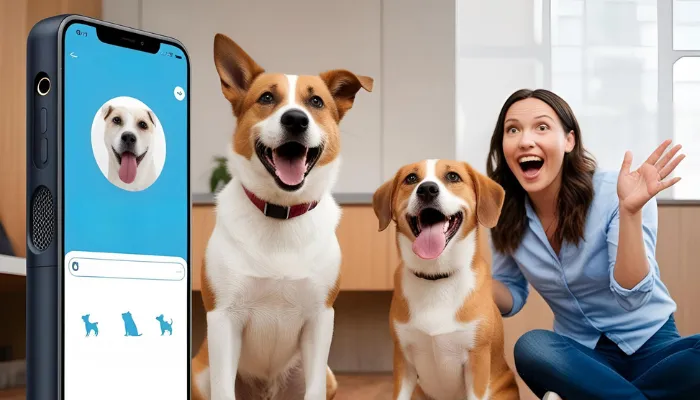Have you thought, How do dogs say “sorry”? If you are a dog owner, you might have noticed some behaviors that a dog shows to indicate that something is wrong. Dog translator? Dogs don’t apologize in words like humans do but that does not mean they do not take responsibility for their actions.
Knowing how to interpret these signals can enhance your relationship with your pet, making it easier for you to manage them. In this article we will look at how dogs show guilt, what body language they use, and the ways through which you can teach them about right and wrong.

Common Ways Dogs Say Sorry
How Do Dogs Say “Sorry”? Dogs do offer apologies but not in words, often using their body as a form of communication. Below are a few examples of how dogs apologize:
| Dog Behavior | What It Means |
|---|---|
| Tucking tail | A sign of submission and recognition of wrongdoing |
| Avoiding eye contact | A way to show respect and acknowledgment |
| Licking your hand | A friendly gesture to rebuild trust |
| Pawing at you | Seeking reassurance and forgiveness |
| Rolling over | Displaying vulnerability as an apology |
All these actions show a dog owner How Do Dogs Say “Sorry”? in their own special way where they expect some form of reassurance from a person they feel attached to.
Why Do Dogs Apologize Differently?
A dog’s primary mode of communication is not verbal but body language. The social hierarchy structure passed down from wolves is based on submission and dominance instead of apologies. Dogs have a way of keeping peace within the “pack” and for them, submission speaks louder than words.
Dogs don’t think through as humans do. Just like how a dog’s “apologies” are made without hindsight.
Key differences between dog and human apologies:
- Dogs use body language; humans use spoken language.
- Dogs use touch to reassure; humans use language.
- Dogs are instinctive; humans apologize after a moment of thought.
Recognizing these differences can help owners understand their dogs better and react to the dog’s behavior in a more effective manner.
How to Respond When Your Dog Apologizes?
How Do Dogs Say “Sorry”? When your dog displays signs of “apology,” it’s important to understand their behavior and respond in a way that reinforces good habits rather than fear.
What to Do:
- Stay calm and reassuring – Give them hints that yelling and scolding is never the solution to the problem.
- Use a gentle tone – Everything is okay and hence the voice must be soft.
- Encourage positive behavior – Affection and treats reward good calmness and obedience.
- Redirect their Focus – Move their focus towards better actions instead of lingering on the error.
What to Avoid:
- Punishing long after the incident – Dogs live in the moment and won’t understand delayed punishment.
- Forcing an apology – Dogs don’t apologize on command like humans do.
- Ignoring positive behaviors – Reinforce good behavior rather than only reacting to bad ones.
Knowing how to receive a dog’s apology helps the owner gets to know the animal better thus establishing trust and creating a healthy training environment.
Can Dogs Learn to Say Sorry?
Dogs do not possess the knowledge of an apology compared to humans, but they do have the ability to perform actions that come close to expressing an apology. Implementing instructions play an important part in determining how dogs behave after doing something wrong.
Approaches to train dogs to ‘apologize’:
- Positive Attention – For submissive behavior, commend them.
- Order sit or down actions – Apology can come in the form of calmness which can be enforced.
- Standardized punishments – Dogs require discipline and routine.
- Ignore negative behavior and reward good behavior – This method shows them the boundaries which are good and which are bad.
Always remember that, with proper guidance, you pet will help resolve any misunderstanding between the two of you.
Conclusion
So, How Do Dogs Say “Sorry”? Tails are tucked, licked, or rolled over as body language signals which indicate submission and a need for assurance. Pets may not feel ‘guilt’ the same way humans do, but they do recognize their owner’s emotion, and respond in a way that shows understanding.
Being able to understand these actions strengthens the relationship you have with your pet. Absolutely, the next time your dog “apologizes,” be more patient and positive to reinforce healthy communication. Do you want to gain more knowledge pertaining to dog behaviors? Continue to learn ways to strengthen your bond with your pet.
